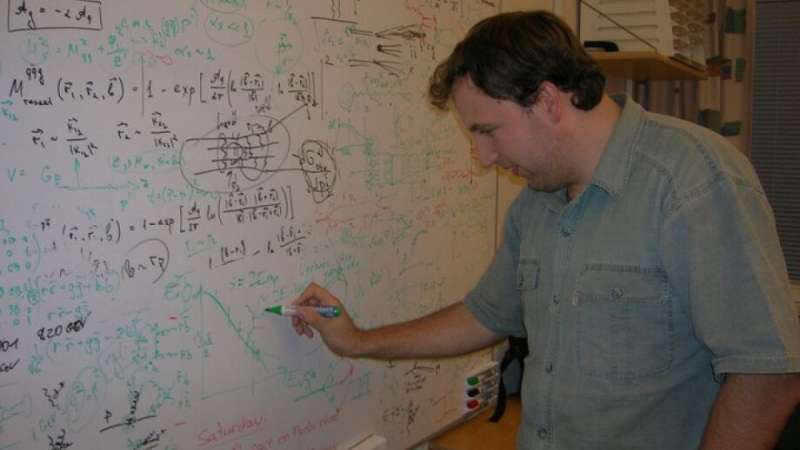Researchers find evidence of elusive Odderon particle

For 50 years, the research community has been hunting unsuccessfully for the so-called Odderon particle. Now, a Swedish-Hungarian research group has discovered the mythical particle with the help of extensive analysis of experimental data from the Large Hadron Collider at CERN in Switzerland.
In 1973, two French particle physicists found that, according to their calculations, there was a previously unknown quasi-particle. The discovery sparked an international hunt.
The Odderon particle is what briefly forms when protons collide in high-energy collisions, and in some cases do not shatter, but bounce off one another and scatter. Protons are made up of quarks and gluons, that briefly form Odderon and Pomeron particles.
And now a research team, involving researchers from Lund University, has succeeded in identifying the Odderon in connection with an advanced data analysis study at the particle accelerator CERN.
"This is a particle physics milestone! It feels fantastic to contribute to an increased understanding of matter; the fundamental building blocks of our world," says Roman Pasechnik, particle physics researcher at Lund University.
Through extensive data analyzes of elastic proton-proton and proton-antiproton collisions, the researchers were able to hone in on the new particle. The analysis took several months, but finally paid off.
"We worked with some of the world's best particle physicists. They were astonished when we published our results," concludes Roman Pasechnik.
More information: T. Csörgő et al. Evidence of Odderon-exchange from scaling properties of elastic scattering at TeV energies, The European Physical Journal C (2021). DOI: 10.1140/epjc/s10052-021-08867-6
Provided by Lund University




















